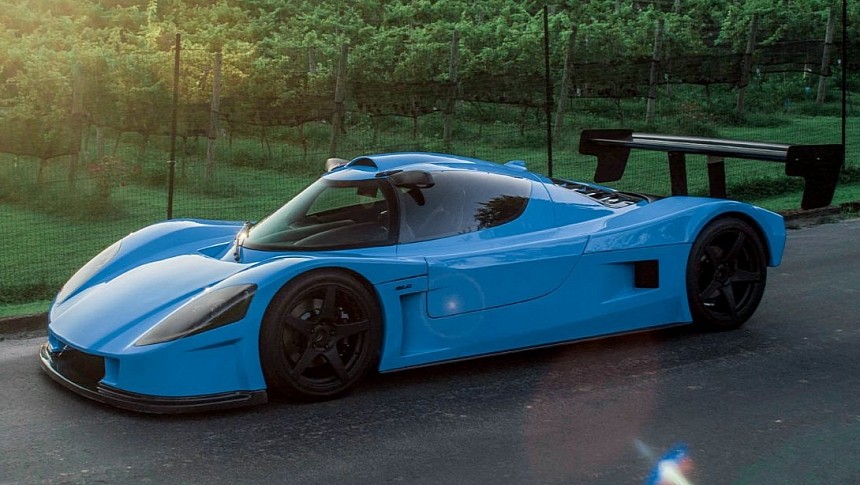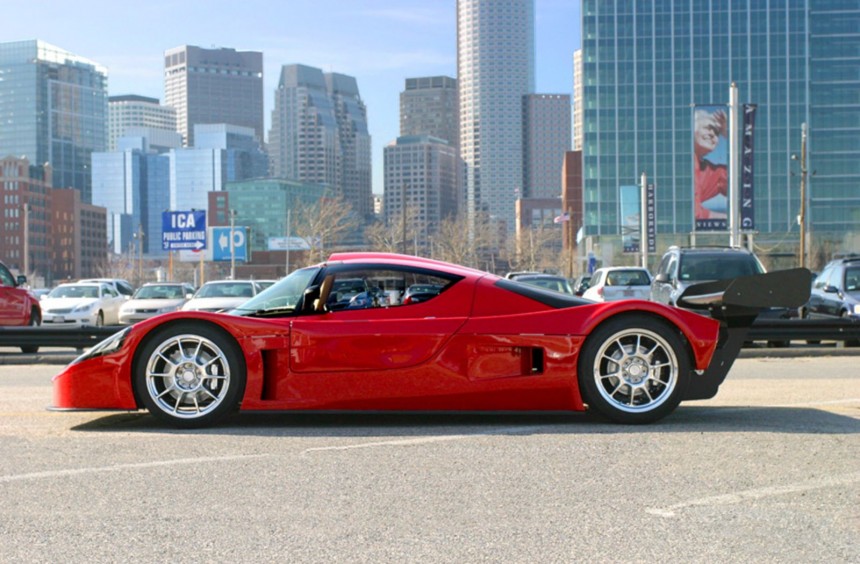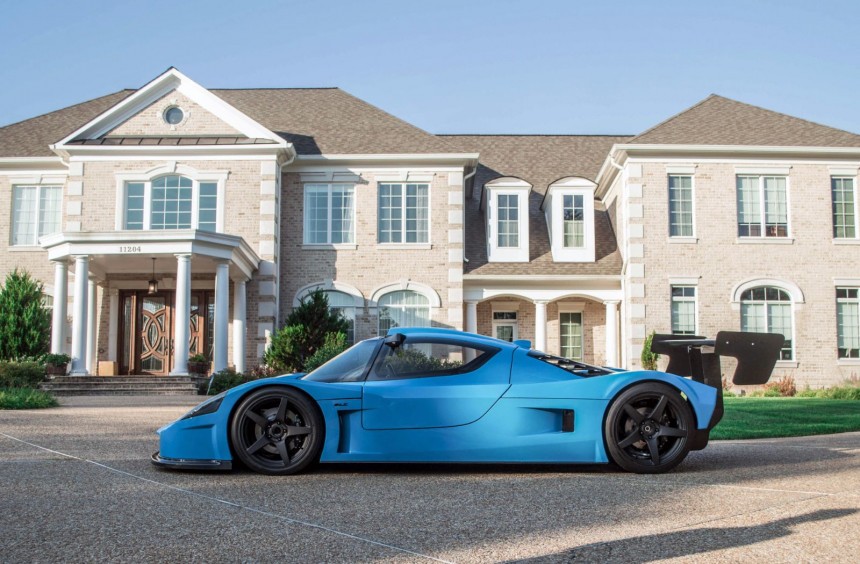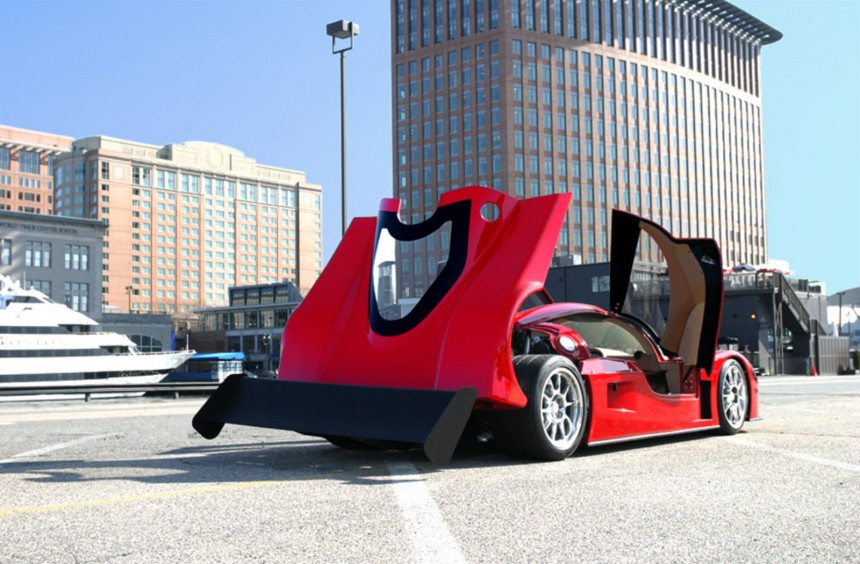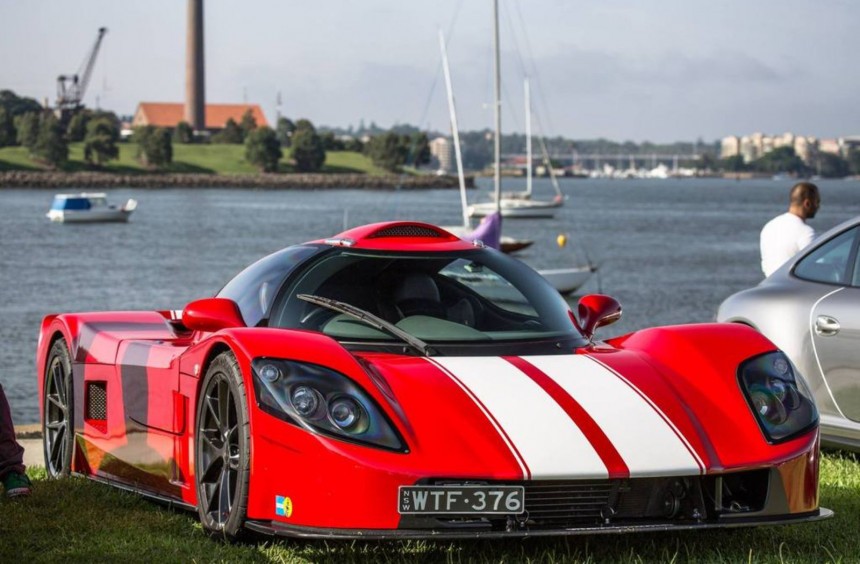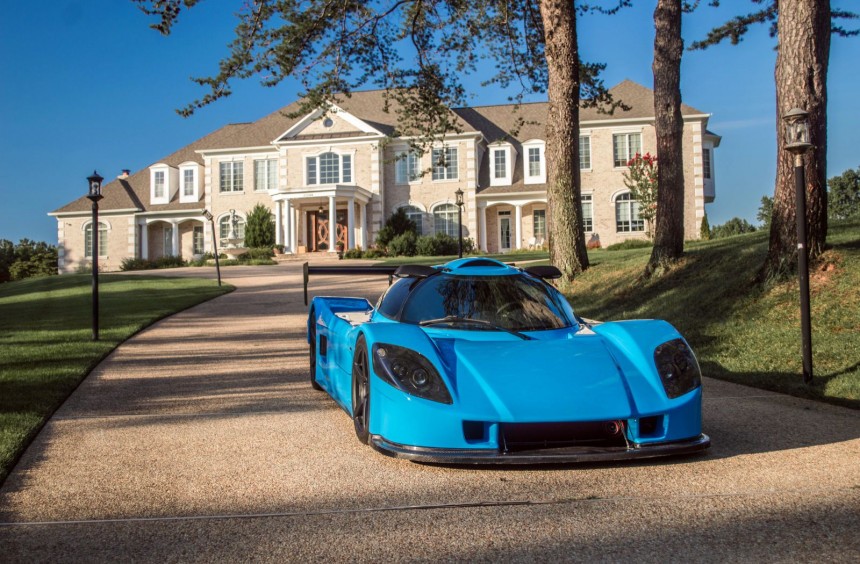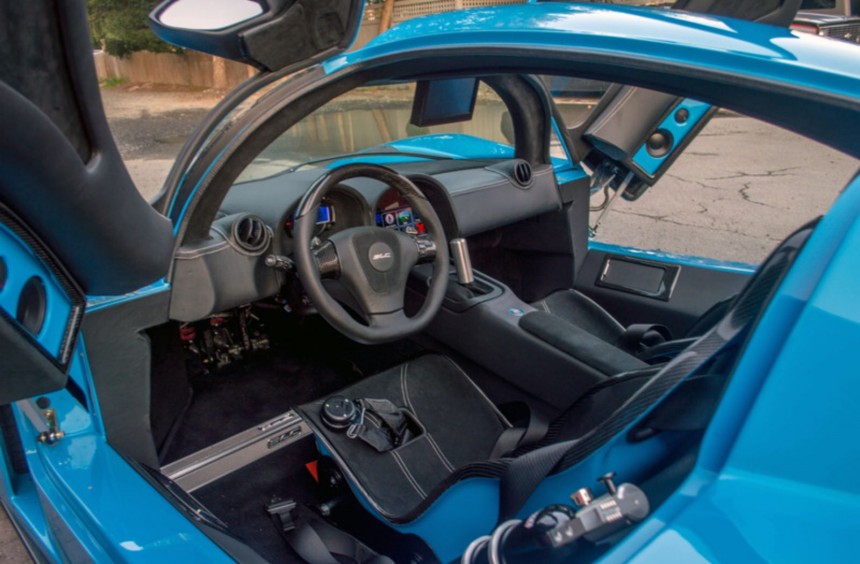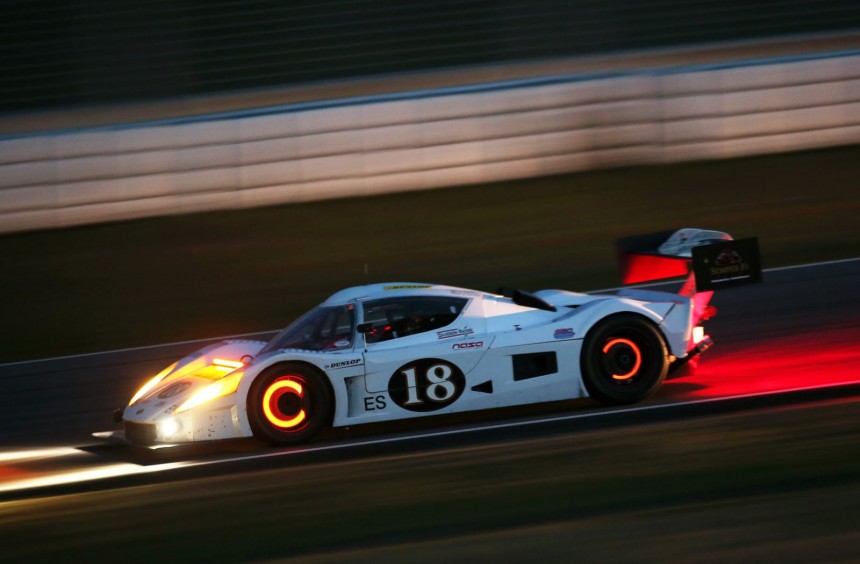With only basic knowledge and tools, you can build this Le Mans prototype-style track weapon for less than $100,000. Even better, the lightweight monster can be street-legal in the right configuration, so you'll turn heads on every corner, not just the track.
Kit cars have been around for decades, but in most cases, building one requires advanced knowledge. Furthermore, builds not based on an existing chassis can rarely be homologated for road use.
However, with the technological advancements available today, things have changed for the better, and one of the best examples is the Superlite SL-C.
Lightweight and powerful enough to embarrass track-focused supercars such as a brand-new Porsche 911 GT3, this formidable ride can be put together for more than half the price of the German legend - and run rings around one.
The Superlite brand was established as a division of Detroit-based Race Car Replicas (RCR) to manufacture the components and market bespoke, track-focused kit cars like the SL-C.
For those unfamiliar with RCR, the company is renowned for creating some of the best replicas of motorsport legends like the Ford GT40, and their products have been featured in blockbuster Holywood movies like Fast 5.
With this in mind, expect high-quality components and a keen attention to detail from the SL-C, one of the Superlite brand's flagship products.
As I mentioned before, the SL-C is not based on an existing car's chassis, so most of its components were designed and built in-house from scratch.
The Le Mans prototype-inspired monster features a TIG-welded aluminum semi-monocoque chassis that can accommodate a wide range of powertrains (I'll get to that in a minute).
The independent suspension system comprises CNC billet aluminum double, unequal-length arms with motorsport-derived pushrods at the rear.
Superlite offers a range of QA1 adjustable shocks and springs, as well as heavy-duty rod ends, lower ball joints, and all other hardware needed to assemble the system.
The steering rack can be either standard or power-assisted, utilizing OEM GM components, while the braking system uses Brembo four-pot calipers that hug large-diameter ventilated discs.
Of course, customers are free to use other compatible suspension and braking system components than those provided by Superlite.
The one thing that Superlite doesn't provide is a powertrain, but the company can set up the engine bay with the mounting hardware to accommodate nearly any American V8, a Lambo/Audi V10, or even a BMW V12.
Transmission-wise, customers are limited to using a transaxle (gearbox and diff in the same unit), with the company recommending a Ricardo, Graziano, or Porsche unit.
With something like a reliable, powerful, and somewhat affordable LS7 paired with a Graziano transaxle, the lightweight SL-C becomes a legitimate supercar killer that can accelerate from 0 to 60 mph (100 kph) in around 3 seconds.
Unquestionably, the best part about the SL-C is its bespoke fiberglass body inspired by Le Mans prototypes.
Most kit cars look like kit cars, but that isn't the case with this one. Like the chassis, the body was designed in-house, and the result is absolutely breathtaking.
Sure, a Lambo or a Ferrari also looks breathtaking, but imagine pulling up at a car meet in one of these bad boys. You'll surely become the center of attention before you even get a chance to park the car.
The shell can be ordered in one of three rear-end configurations: a street version with an integrated bumper, a short tail with a huge spoiler for the track, or an even longer, Le Mans-style variant for competition use and better straight-line speeds.
Like all other components, the body shell can be ordered with all the hinges and mounting hardware needed to assemble everything easily.
Moreover, the body can be improved with a wide range of carbon fiber or fiberglass extras, like splitters, spoilers, or vents.
The same goes with the interior, which can be configured solely for the track or bolstered with extra panels to make it feel like a street-legal supercar cockpit.
For customers who are looking to build an SL-C but don't have all the money available right away, Superlite has conceived a sixteen-stage kit.
Only the body and chassis packages have to be ordered together, but the rest can be brought individually, allowing customers to build the car as their finances permit.
Nevertheless, the most cost-effective option is to purchase everything at once, as it lowers shipping costs.
While playing with the online configurator available on the Superlite website, I managed to configure a "streetable" SL-C for around $67,000.
The package I configured includes a gel coat-colored body, fiberglass splitters, vents, and spoiler and vents, a DOT-approved glass windshield, Forgestar wheels, a fully paneled interior, suspension, brakes, and all other hardware needed for the build.
Add to that a new, turnkey LS7 crate engine ($15,000), a used Graziano V8 six-speed transaxle ($10,000-$20,000), and a set of tires, and the car can be completed for under $100,000.
A used engine can be sourced for much less, bringing the total cost down even more.
Of course, customers can also go all out with the available carbon fiber accessories, get an exotic, obscenely-powerful engine and a brand-new transmission, which will probably take the project closer to $200,000.
But even then, the result will be a Le Mans Hypercar-level (performance-wise) track weapon that costs about as much as a brand-new 911 GT3 RS.
Before I answer this, I must mention that Superlite did not sponsor this article, and I didn't get to test an SL-C myself.
The goal was to draw attention to an awesome supercar that an enthusiast can build in his or her garage for much less money than a Porsche, Lambo, or Ferrari.
That said, I scoured the World Wide Web for reviews and couldn't find any that criticized the SL-C. The reviews I found, such as the one posted below by Cam Thai, praise the build quality of the Superlite components and the car's maneuverability.
Furthermore, Superlite entered the SL-C built using only off-the-self components into the 2011 NASA Super Unlimited class National Championship.
The car dominated the competition by grabbing pole position and winning every race.
Therefore, the Superlite SL-C is far from your average kit car. It looks good, performs incredibly well, and has an impressive motorsport resume.
So, if you're looking to build an affordable bespoke supercar that can dominate track days and is also drivable on public roads, the Superlite SL-C deserves serious consideration.
However, with the technological advancements available today, things have changed for the better, and one of the best examples is the Superlite SL-C.
Lightweight and powerful enough to embarrass track-focused supercars such as a brand-new Porsche 911 GT3, this formidable ride can be put together for more than half the price of the German legend - and run rings around one.
Developed by Race Car Replicas in the US
For those unfamiliar with RCR, the company is renowned for creating some of the best replicas of motorsport legends like the Ford GT40, and their products have been featured in blockbuster Holywood movies like Fast 5.
With this in mind, expect high-quality components and a keen attention to detail from the SL-C, one of the Superlite brand's flagship products.
A bespoke, high-tech chassis
The Le Mans prototype-inspired monster features a TIG-welded aluminum semi-monocoque chassis that can accommodate a wide range of powertrains (I'll get to that in a minute).
The independent suspension system comprises CNC billet aluminum double, unequal-length arms with motorsport-derived pushrods at the rear.
Superlite offers a range of QA1 adjustable shocks and springs, as well as heavy-duty rod ends, lower ball joints, and all other hardware needed to assemble the system.
The steering rack can be either standard or power-assisted, utilizing OEM GM components, while the braking system uses Brembo four-pot calipers that hug large-diameter ventilated discs.
Of course, customers are free to use other compatible suspension and braking system components than those provided by Superlite.
Conceived to accommodate a huge range of powertrains
Transmission-wise, customers are limited to using a transaxle (gearbox and diff in the same unit), with the company recommending a Ricardo, Graziano, or Porsche unit.
With something like a reliable, powerful, and somewhat affordable LS7 paired with a Graziano transaxle, the lightweight SL-C becomes a legitimate supercar killer that can accelerate from 0 to 60 mph (100 kph) in around 3 seconds.
A beautifully sculptured body to top it all off
Most kit cars look like kit cars, but that isn't the case with this one. Like the chassis, the body was designed in-house, and the result is absolutely breathtaking.
Sure, a Lambo or a Ferrari also looks breathtaking, but imagine pulling up at a car meet in one of these bad boys. You'll surely become the center of attention before you even get a chance to park the car.
The shell can be ordered in one of three rear-end configurations: a street version with an integrated bumper, a short tail with a huge spoiler for the track, or an even longer, Le Mans-style variant for competition use and better straight-line speeds.
Like all other components, the body shell can be ordered with all the hinges and mounting hardware needed to assemble everything easily.
Moreover, the body can be improved with a wide range of carbon fiber or fiberglass extras, like splitters, spoilers, or vents.
The same goes with the interior, which can be configured solely for the track or bolstered with extra panels to make it feel like a street-legal supercar cockpit.
Comprised of sixteen packages that can be ordered separately
Only the body and chassis packages have to be ordered together, but the rest can be brought individually, allowing customers to build the car as their finances permit.
Nevertheless, the most cost-effective option is to purchase everything at once, as it lowers shipping costs.
Does it really cost under $100,000?
The package I configured includes a gel coat-colored body, fiberglass splitters, vents, and spoiler and vents, a DOT-approved glass windshield, Forgestar wheels, a fully paneled interior, suspension, brakes, and all other hardware needed for the build.
Add to that a new, turnkey LS7 crate engine ($15,000), a used Graziano V8 six-speed transaxle ($10,000-$20,000), and a set of tires, and the car can be completed for under $100,000.
A used engine can be sourced for much less, bringing the total cost down even more.
Of course, customers can also go all out with the available carbon fiber accessories, get an exotic, obscenely-powerful engine and a brand-new transmission, which will probably take the project closer to $200,000.
But even then, the result will be a Le Mans Hypercar-level (performance-wise) track weapon that costs about as much as a brand-new 911 GT3 RS.
Does it perform as good as it looks?
The goal was to draw attention to an awesome supercar that an enthusiast can build in his or her garage for much less money than a Porsche, Lambo, or Ferrari.
That said, I scoured the World Wide Web for reviews and couldn't find any that criticized the SL-C. The reviews I found, such as the one posted below by Cam Thai, praise the build quality of the Superlite components and the car's maneuverability.
Furthermore, Superlite entered the SL-C built using only off-the-self components into the 2011 NASA Super Unlimited class National Championship.
The car dominated the competition by grabbing pole position and winning every race.
Therefore, the Superlite SL-C is far from your average kit car. It looks good, performs incredibly well, and has an impressive motorsport resume.
So, if you're looking to build an affordable bespoke supercar that can dominate track days and is also drivable on public roads, the Superlite SL-C deserves serious consideration.
